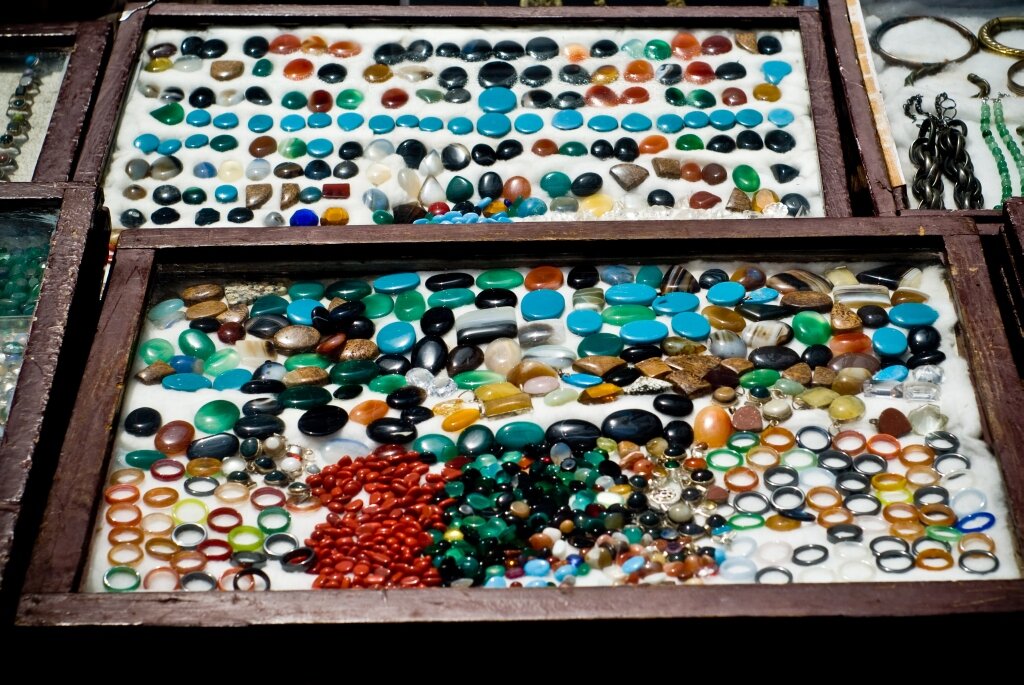Rocky Remedies

As the old saying goes, “sticks and stones may break my bones, except diamonds, which will repair them.” Or something like that.
Dr. Eric Lis is a physician, gamer, and author of the Skirmisher Publishing LLC sourcebook, Insults & Injuries.
As the old saying goes, “sticks and stones may break my bones, except diamonds, which will repair them.” Or something like that.
In both my job and my personal life, I come across a lot of people who believe in so-called “alternative medicine.” There are a lot of branches of alternative medicine that I have a hard time wrapping my head around, such reiki, cupping, and other techniques which have been repeatedly tested in laboratories without much apparent success. In the case of reiki, at least, I can see where some people might derive benefit from it; I don’t believe that humans can manipulate energy flows with the force of their will, but I see how the prolonged and very human contact involved between practitioner and client could have real healing benefit. In contrast, I’ve never been able to see the sense behind healing crystals. I’ve done some reading around the topic and had it explained to me by very dedicated crystal-users, but no one has ever explained to me by what principles a particular stone would, by its very presence, alter the apparently observable laws of physics. On the other hand, it must be admitted that the use of crystals in healing is very, very old, and has been embraced by many cultures throughout history. It’s tempting to believe that any technique which has been used by numerous cultures must have a grain of truth to it… however devoid of logic that argument may actually be, because a million desperate people can be wrong just as easily as one lone crackpot. Whatever the case, we have to acknowledge that crystal healing has a long and storied history, and crystals are inextricably tied into many philosophies of magic both in our world and in our games.
One of the great medieval texts on the subject of crystals was the Book of Sydrac (or Sidrac). Of unknown authorship, the Book of Sydrac is believed to have been written in France in the 13th century. It’s a very curious book because the bulk of the text is written sort of like a novel or a play, wherein a pagan king asks a Jewish philosopher (Sydrac) various questions about life, the universe, and everything, and Sydrac answers them, detailing a vast range of tidbits about European life and thought in doing so. Out of more than a thousand questions and answers, in one of them, the king asks Sydrac to tell him the special uses of previous stones. Sydrac proceeds to describe some twenty four stones, of which twenty have “medical” properties, usually overtly magical. Such is the clarity of the text that not all of these stones can actually be identified as stones we know today, making it impossible to really say how closely Sydrac’s medical uses correspond to what we today believe to be true.
Here is a selection of the stones from Sydrac’s response, ready to be incorporated (directly, or as inspiration) into the game, story, or perhaps even medical regimen of your choice. I have drawn this list from this paper by Christopher Duffin.
Sard: Slows aging, stops bleeding, and protects the wearer from bites and venoms.
Emerald: Protects against diseases of the heart and episodes of gout.
Ruby: Sydrac’s “lord of all stones,” apparently capable of curing all diseases in animals if they drink water in which a ruby has steeped. It also “fedeth a mans sight & comfortheth the hert & the body.”
Sapphire: Another powerful antivenom as well as a general antipyretic and reliever of aches and pains.
Jasper: Another stone able to stop bleeding, but apparently only if the patient had strong belief in god.
Ligure: One of the unidentified stones, this one, if carried, would protect against depression. In game, perhaps it might also protect against fear spells and effects?
Amethyst: Prevents drunkenness. Possibly this one would not be useful for adventurers unless it also protected against poisons, but I could imagine slipping an amethyst into someone’s clothes being a popular prank to play before going to the tavern.
Diamond: In addition to protecting against poisons, carrying a diamond on one’s person would apparently strength bones and protect them from being broken. We can imagine why ancient healers might make this association.
Crasnuf: Another unidentified stone, this one is said to prevent “sudden death” if the owner mediates upon it twice each day, and furthermore would prevent wounds from becoming infected in carried.